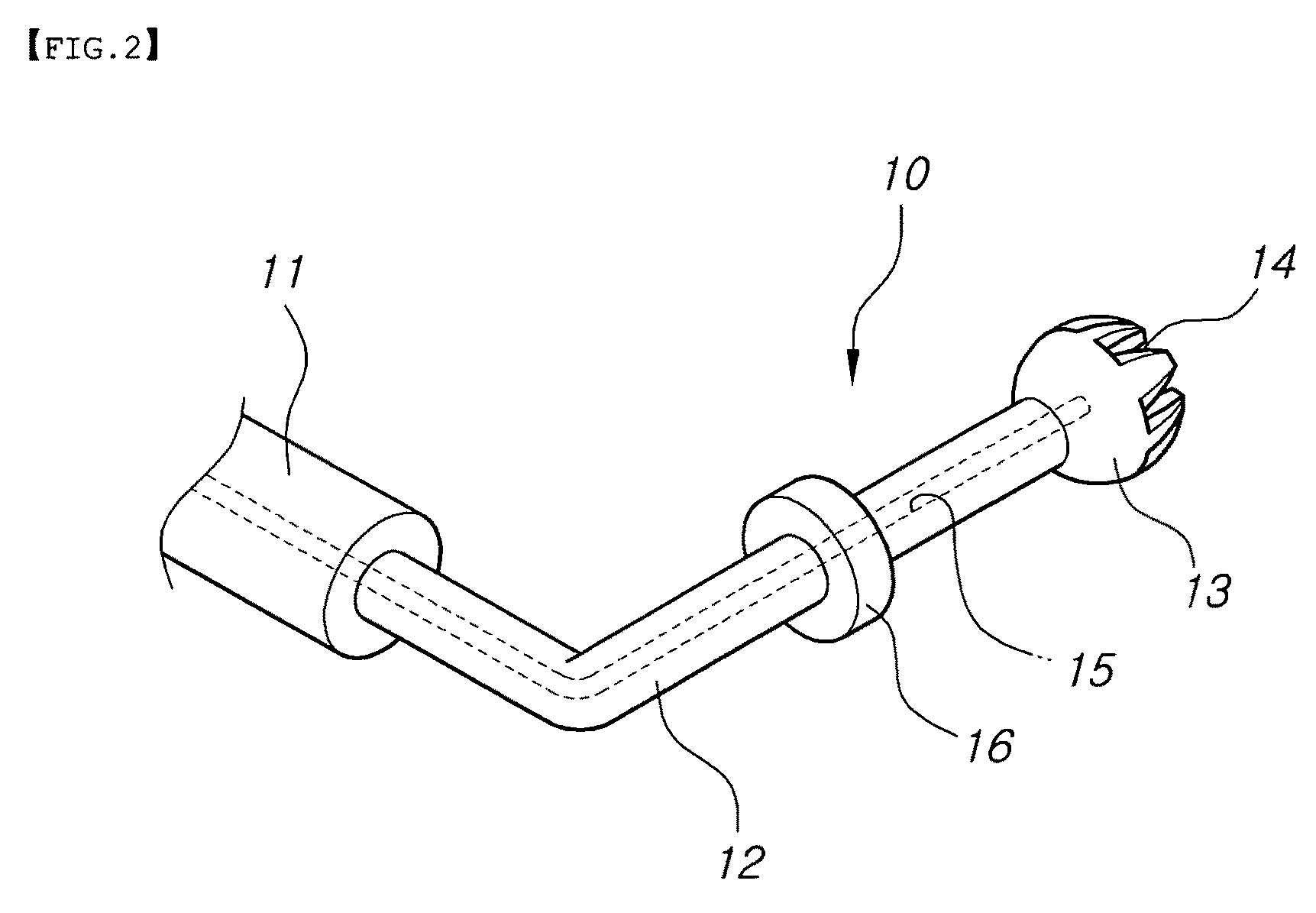Piezotome for maxillary sinus operation
a maxillary sinus and ultrasonic technology, applied in the field of ultrasonic surgery units, can solve the problems of long implants that cannot be placed into the maxillary posterior teeth, lack of bone in which implants can be placed, and difficulty in carrying out implantation of maxillary posterior teeth, etc., to achieve the effect of maximizing operation efficiency and shortening operating tim
- Summary
- Abstract
- Description
- Claims
- Application Information
AI Technical Summary
Benefits of technology
Problems solved by technology
Method used
Image
Examples
Embodiment Construction
[0030]Description will now be made of exemplary embodiments of the present invention with reference to the accompanying drawings.
[0031]FIG. 1 is a perspective view illustrating the state of a piezotome operation unit of the present invention in which it is used, connected to a piezo main unit, FIG. 2 is a perspective view illustrating a piezotome operation unit for a vertical approaching operation according to an embodiment of the present invention, FIG. 3 is a perspective view illustrating a piezotome operation unit for a lateral approaching operation according to an embodiment of the present invention, FIGS. 4 to 6 are cross-sectional views illustrating an exemplary procedure of using the piezo operation unit for a vertical approaching operation in order to form a vertical hole in a remaining bone of a maxillary sinus according to the present invention, and FIG. 7 is a schematic front view illustrating an example of using the piezotome operation unit for a lateral approaching oper...
PUM
 Login to View More
Login to View More Abstract
Description
Claims
Application Information
 Login to View More
Login to View More - R&D
- Intellectual Property
- Life Sciences
- Materials
- Tech Scout
- Unparalleled Data Quality
- Higher Quality Content
- 60% Fewer Hallucinations
Browse by: Latest US Patents, China's latest patents, Technical Efficacy Thesaurus, Application Domain, Technology Topic, Popular Technical Reports.
© 2025 PatSnap. All rights reserved.Legal|Privacy policy|Modern Slavery Act Transparency Statement|Sitemap|About US| Contact US: help@patsnap.com



